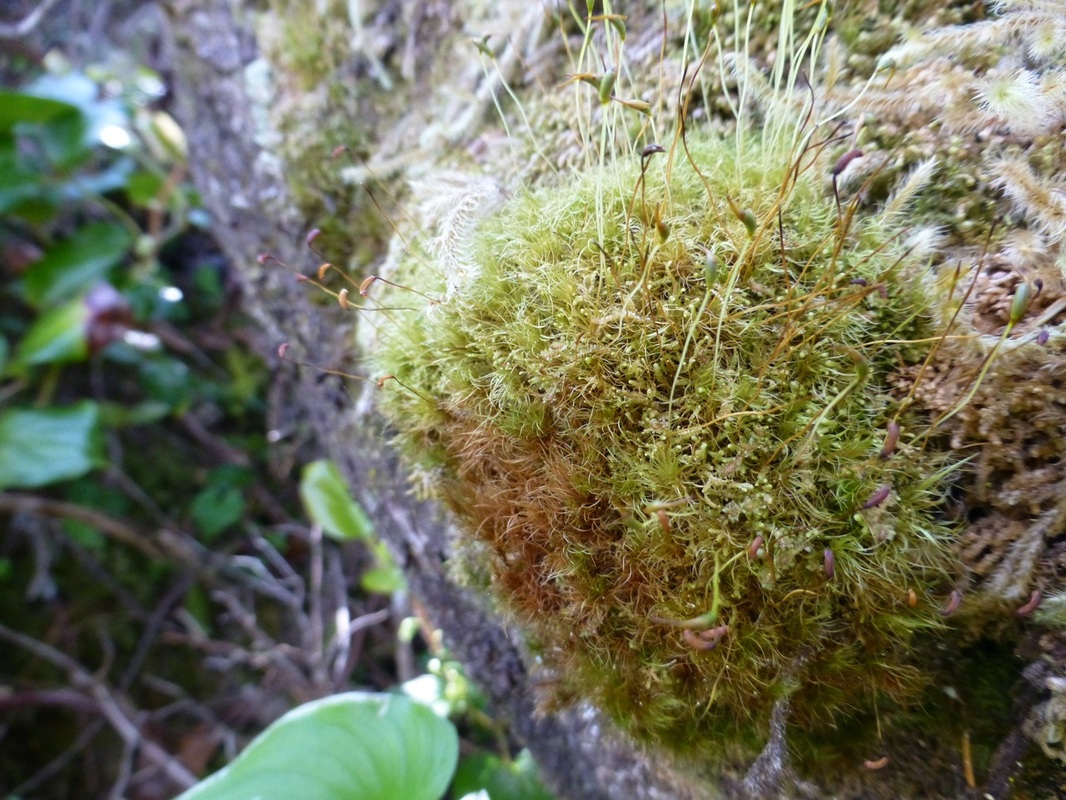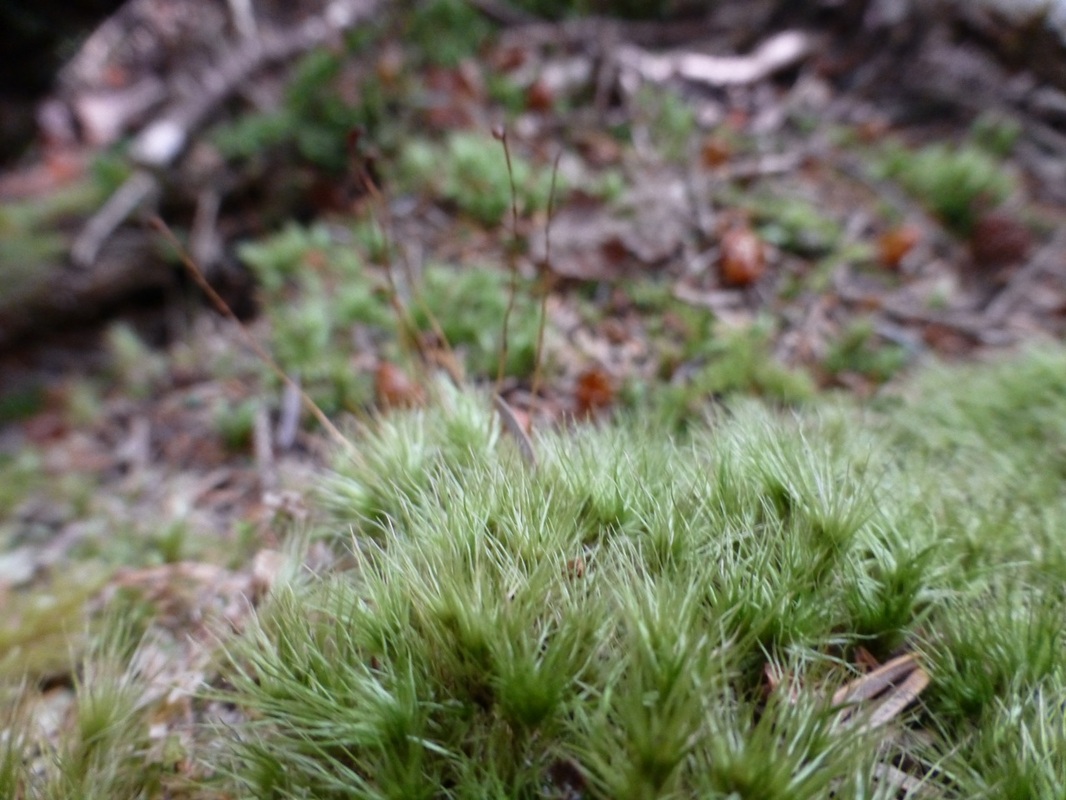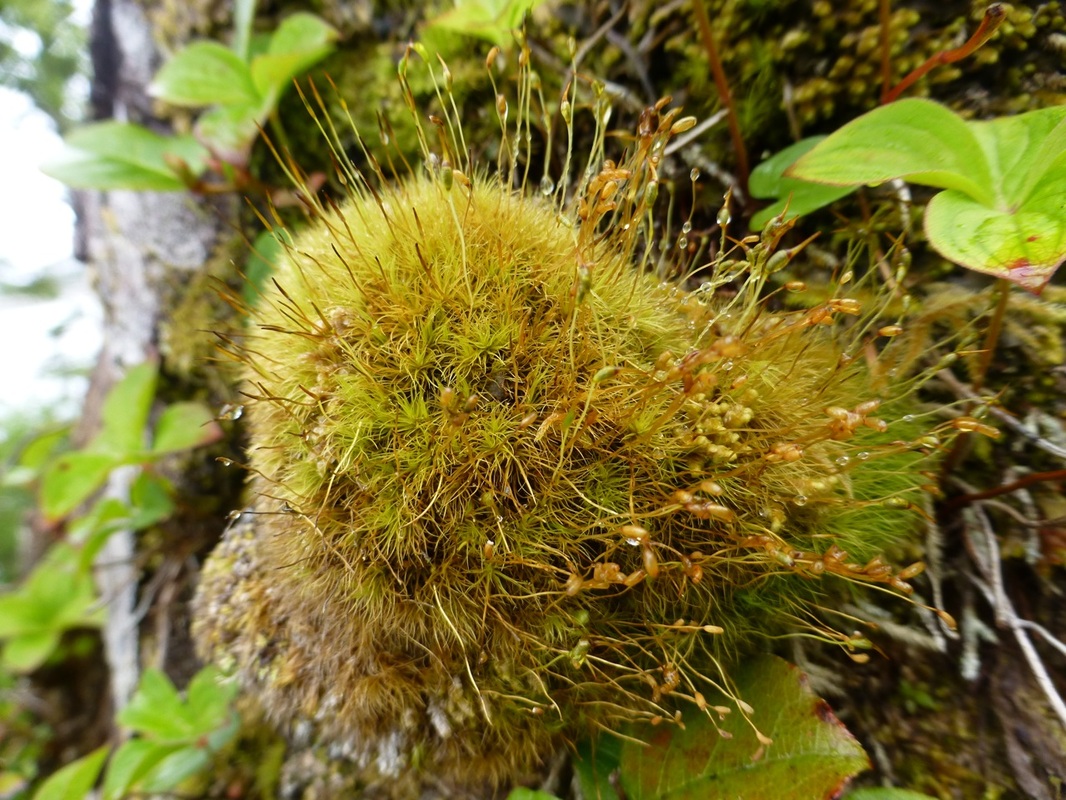Dusky fork moss, curly heron's-bill moss • Dicranum fuscescens
Identification
Dusky fork moss has olive-green plants that grow upright to 1-6 cm tall. Its has unbranched or occasionally branched stems. Its narrow, lance-shaped leaves have pointed tips and may be upright and sickle-shaped or strongly curved and twisted when dry. The tops of the leaves are V-shaped in cross section, and the midribs extend to the leaf tips. Sporophytes are common and grow at plant tips. They are single-stalked and green.
Habitat & Range
Dusky fork moss grows on rotting logs and humus, and is occasionally epiphytic on living trees. It is a common species in rainforests from sea level to subalpine elevations. It has a circumboreal distribution that extends into some arctic regions. In western North America its range extends from Alaska to California.
Similar Species
Dusky fork moss can be difficult to differentiate from some of the other 20-odd Dicranum species found in coastal BC. The leaves that strongly curve to one side are a main distinguishing feature. Wavy-leaved moss (D. polysetum) is a larger species and has wrinkled leaves. Broom moss (D. scoparium) has elongated and pitted upper leaf cells and is also larger than dusky fork moss.
iNaturalist
https://www.inaturalist.org/taxa/123177-Dicranum-fuscescens
Dusky fork moss has olive-green plants that grow upright to 1-6 cm tall. Its has unbranched or occasionally branched stems. Its narrow, lance-shaped leaves have pointed tips and may be upright and sickle-shaped or strongly curved and twisted when dry. The tops of the leaves are V-shaped in cross section, and the midribs extend to the leaf tips. Sporophytes are common and grow at plant tips. They are single-stalked and green.
Habitat & Range
Dusky fork moss grows on rotting logs and humus, and is occasionally epiphytic on living trees. It is a common species in rainforests from sea level to subalpine elevations. It has a circumboreal distribution that extends into some arctic regions. In western North America its range extends from Alaska to California.
Similar Species
Dusky fork moss can be difficult to differentiate from some of the other 20-odd Dicranum species found in coastal BC. The leaves that strongly curve to one side are a main distinguishing feature. Wavy-leaved moss (D. polysetum) is a larger species and has wrinkled leaves. Broom moss (D. scoparium) has elongated and pitted upper leaf cells and is also larger than dusky fork moss.
iNaturalist
https://www.inaturalist.org/taxa/123177-Dicranum-fuscescens
References
Dicranum fuscescens Sm. In Klinkenberg, Brian. (Ed.). E-Flora BC: Electronic Atlas of the Plants of British Columbia. Lab for Advanced Spatial Analysis, Department of Geography, University of British Columbia, Vancouver. Accessed 06/10/2014.
Pojar, J. and MacKinnon, A. (1994). Plants of Coastal British Columbia. Vancouver, BC: Lone Pine Publishing. P.
Vitt, D. H., Marsh, J. E., and Bovey, R. B. (1988). Mosses Lichens & Ferns of Northwest North America. Vancouver, BC: Lone Pine Publishing. P. 125.
Authors and editors of page
Kelly Fretwell, Ian Cruickshank, and Brian Starzomski
Dicranum fuscescens Sm. In Klinkenberg, Brian. (Ed.). E-Flora BC: Electronic Atlas of the Plants of British Columbia. Lab for Advanced Spatial Analysis, Department of Geography, University of British Columbia, Vancouver. Accessed 06/10/2014.
Pojar, J. and MacKinnon, A. (1994). Plants of Coastal British Columbia. Vancouver, BC: Lone Pine Publishing. P.
Vitt, D. H., Marsh, J. E., and Bovey, R. B. (1988). Mosses Lichens & Ferns of Northwest North America. Vancouver, BC: Lone Pine Publishing. P. 125.
Authors and editors of page
Kelly Fretwell, Ian Cruickshank, and Brian Starzomski







